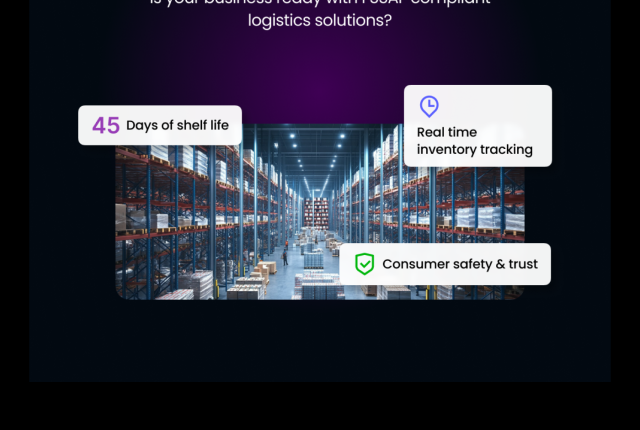
Omnichannel Logistics: A Different Beast
An effective omnichannel logistics strategy is an essential implement to have in today’s fast-evolving retail market.
ture of Shopping, wrote that the new phenomenon of companies combining online sales with traditional channels should have a new name: Omnichannel Retail.
The first mainstream usage of the term is credited to the Harvard Business Review writer Darrell Rigby, who, in the December 2011 article, The Future of Shopping, wrote that the new phenomenon of companies combining online sales with traditional channels should have a new name: Omnichannel Retail.
Omnichannel logistics is the go-to strategy for every seller and retailer today. No product development life-cycle management strategy is complete without it having sufficient room for omnichannel marketing and logistics.
Even online marketplaces like Amazon, Flipkart, and Alibaba whose primary focus areas are online sales and logistics services make Omnichannel strategy an integral part of their marketing playbook. On the other hand, large traditional retailers like Walmart and Target have adopted effective omnichannel strategies to stay ahead in the ever-changing retail industry.
Therefore, traders and manufacturers need to understand the main fundamentals and the purpose of a logistics strategy designed to serve omnichannel sales, or in other words, the basic components of an omnichannel logistics strategy.
The Evolution of Omnichannel Logistics
The story of omnichannel logistics evolution is the story of the convergence of the e-commerce supply chain with that of traditional retailers. The e-commerce revolution that started in the early-to-mid 2000s with the emergence of Amazon, Airbnb and Uber, and picked up speed in the aftermath of the 2008 financial recession, took the retail world by storm due to an unexpected phenomenon – consumers worldwide and in India were willing to forego the essential element of touch-and-feel if they were promised fast, reliable deliveries at their doorstep.
Even so, it took a while for both ecommerce players and offline retailers to learn from each other. The logistics industry developed omnichannel logistics solutions after aligning the many different priorities of the industry’s three main stakeholders – merchants or sellers, its third-party logistics service providers, and sales channels. For example, the main goals of traditional logistics strategy was to optimize cost and maximize fill rates. The right omnichannel strategy had to include a few more objectives such as a fast and reliable delivery mechanisms and improved responsiveness to demand.
The unstoppable rise of online marketplaces over the last decade meant that retailers in all major markets started to pay close attention to omnichannel logistics. That in order to compete and even hold onto their traditional turf they will have to match the speed of delivery and the wide range of product choices that online marketplaces. Innovations such as fulfilment centers designed specifically for online channel logistics, nearshoring or locating sortation hubs closer to the customer and last-mile delivery milk-runs are a few of the many innovations that the growth of omnichannel logistics has produced.
Omnichannel Logistics: Strategy Tenets
It is imperative for every merchant to have an omnichannel logistic strategy in place, starting from the time of launching a product, if not earlier. Every step of a product’s go-to-market journey, from procurement to aftersales must factor in the company’s omnichannel strategy. The following areas must necessarily include considerations for all channels, online, offline and a mix of the two.
The transportation strategy should consider utilizing online channels for freight sourcing activities like reverse auction and spot bidding. It should also have a smart strategy in place for optimizing its last-mile logistics.
And possibly the most crucial area of logistics that needs to an integrated omnichannel strategy is warehousing. These include functions like warehousing design where one needs to decide whether to follow a hub-and-spoke model or a decentralized model based on one’s omnichannel presence (or lack thereof) in a region. Same is true for the corporate decision to have ecommerce-only distribution centers also known as fulfilment centers as part of the warehouse network.
Equally important are decisions pertaining to the type of technology to be used across the supply chain. Omnichannel logistics operations need the deployment of advanced e-commerce applications that can be seamlessly integrated with legacy software systems. It is nuanced decisions like these that can translate into huge savings or costs based on one’s knowledge of omnichannel trends.
Choose with Care
Today’s manufacturers and sellers, big and small, have access to both online and physical marketplaces be it for B2B or B2C requirements. That is a good problem to have compared to facing the challenge of a paucity of distribution options, which was the case not very long ago. However, the availability of different channels also brings forth problems of its own. The biggest one being the often-witnessed tendency of businesses and professionals to throw money at the problem of pricking the right solution. But that is a negative-sum game, where uninformed choices lead to lost sales and customers. The right course is to work with sector experts such as Apollo Supply Chain whose mission it is to help you navigate the market for omnichannel success.
Related posts
FSSAI reinforces Shelf-Life Guidelines: Key Considerations for E-Commerce FBOs
Introduction The Food Safety and Standards Authority of India (FSSAI) has reinfo
Sustainability in Business and Logistics: The Future is Now
For manufacturers, traders, and service providers, sustainability is not just a
Advantage D2C: Reach Your Consumer
A Direct-To-Consumer sales strategy, backed by sound logistics, can prove to be



Leave a Reply